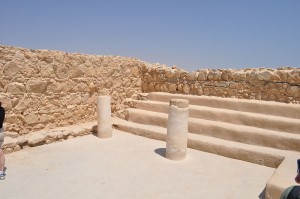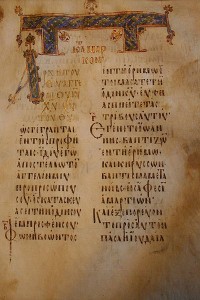Search Results for: the benediction against the minim
The Benediction against the Minim
A new set of circumstances confronted the tannaitic leadership when it reassembled at Yavneh after the war with Rome was lost. By this time, the need to close ranks and to face the future as a united community was greater than ever. We shall see, though, that the Rabbis still did not elect to see the Jewish Christians as a separate religion. After all, they still met the halakhic criteria for Jewish status. Instead, action would be taken to bar them from officiating as precentors in the synagogue in order to make them feel unwanted there and to exclude their books from sanctified status. Other restrictions would attempt to separate the Jewish Christians from the mainstream Jewish community. Tannaitic law would eventually have to face the Gentile Christians, but the Rabbis as yet had little opportunity for contact with them.
While our sources show no attempt on the part of the tannaim to read anyone out of the Jewish people on account of heretical beliefs, the Rabbis did impose certain restrictions on those whom they regarded as standing outside the accepted system of Jewish belief. Such heretics who were subjected to legal… Continue reading
Opposition to Christian Scriptures
While the benediction against the minim was certainly the most important step taken by the tannaim to combat Jewish Christianity, they also took steps to emphasize that the Christian Scriptures were not holy. First, the Jewish Christians themselves copied scrolls of the Bible (sifre minim). The question here was the sanctity of the entire text. Second, beginning in the second half of the first century, early recensions of the Gospels and Epistles began to circulate. The sanctity of those sections of these Christian texts that quoted the Hebrew Scriptures directly also had to be determined. In view of the role of the Gospels and Epistles as a vehicle for the dissemination of Christianity, it is easy to understand why the Rabbis went out of their way to divest them of sanctity and halakhic status.
T. Shabbat 13 (14):5 deals with these texts:
We do not save from a fire (on the Sabbath) the Gospels and the books of the minim (“heretics”). Rather, they are burned in their place, they and their Tetragrammata. Rabbi Yose HaGelili says: During the week, one should cut out their Tetragrammata and hide them away and burn the remainder. Said Rabbi Tarfon:… Continue reading
Christianity
Parting of the Ways
The split between Judaism and Christianity did not come about simply or quickly. It was a complex process which took some one hundred years, starting from the crucifixion, and which had different causes and effects depending on whether it is looked at from the point of view of Judaism or Christianity. Further, the question of legal status as seen through Roman eyes also had some relationship to the issue.
From the standpoint of Christianity, the schism is not difficult to trace. In the earliest Gospel texts, which picture Jesus as debating issues of Jewish law with the Pharisees, no hostility is observed. The crucifixion is said to have been carried out by the Romans with the support of some (apparently Hellenized) priests. As we trace the history of the New Testament traditions, they move from disputes with Pharisees, scribes, and chief priests to polemics against the Jews and Judaism, from the notion of some Jews as enemies of Jesus to the demonization of the Jewish people as a whole. By sometime in the first century the New Testament redactors had clearly decided that they were no longer part of the Jewish people. Therefore, they described Jesus… Continue reading


